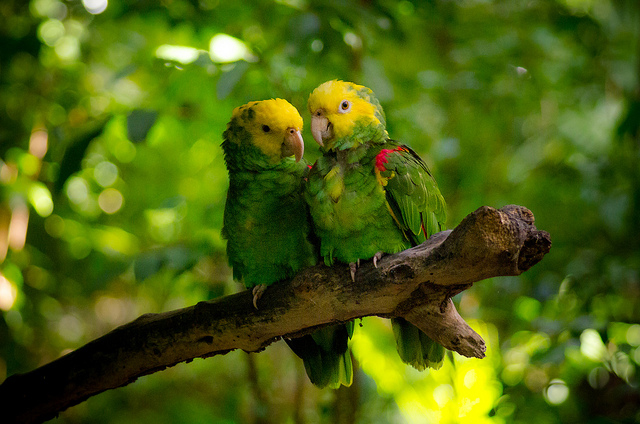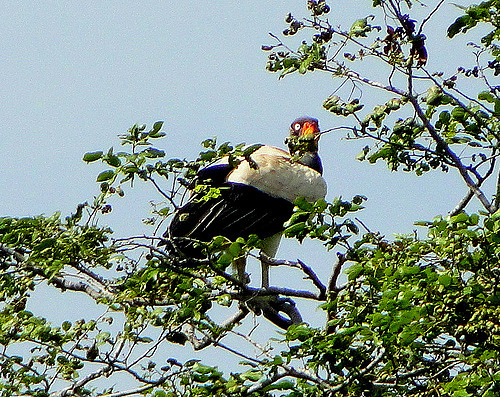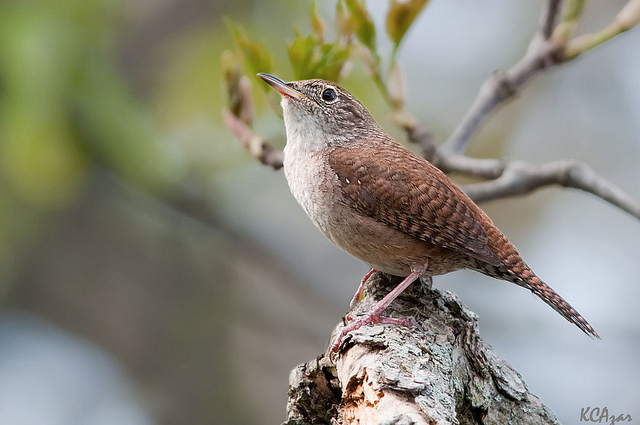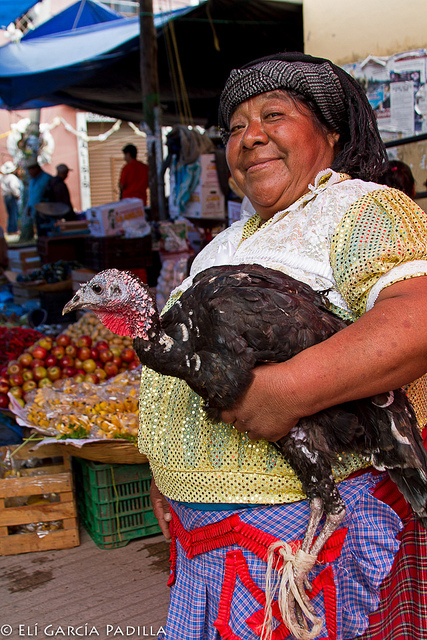The authors of a recent journal article found that what they call the “folk ornithological taxonomies” in two Zapotec mountain villages of Oaxaca demonstrate that the people in both communities are intimately familiar with their local birdlife. The three authors, G. Alcantara-Salinas, E.S. Hunn, and J. E. Rivera-Hernandez, catalog the birds they have seen and examine the ways the local people view them. Then, they provide a fascinating discussion of the ways their knowledge of birds relate to their ethic of protecting their natural heritage.

San Miguel Tiltepec, one of the communities, is within the municipality of Ixtlán de Juárez. It has a population of 417 people, of whom 77 percent speak Zapotec. Near the homes are fruit orchards, fields of maize and beans, household gardens where they cultivate beans, squash, maize, and culinary herbs, and patches of forest lands where the villagers gather medicinal plants and firewood. The people also collect wild mushrooms, wild plants, and do some hunting. The lands of the community are spread over a diversity of habitats, including subtropical evergreen forests and montane cloud forests.
About 160 km. (100 miles) west of San Miguel across a couple mountain ranges is San Juan Mixtepec in the district of Miahuatlán. It has a population of 711, of which 94 percent speak Zapotec as their first language. Gardens provide similar vegetables as in San Miguel, though the people of San Juan supplement their gardening by raising domestic chickens and small livestock. The people of San Juan jealously guard their forests, permitting only limited logging under contracts, some hunting, and gathering of medicinal herbs.
The authors emphasize that Oaxaca ranks first in Mexico in terms of its avian diversity, with 736 confirmed species of birds, nearly as many as the rest of North America north of Mexico. While the two Zapotec communities host widely differing species due to their different ecological zones, together they offer critical habitats for numerous endangered, threatened, and endemic species.

For instance, Alcantara-Salinas et al. observed the endangered yellow-headed Amazon (Amazona oratrix) plus two other birds that are considered to be threatened—the military macaw (Ara militaris) and the dwarf jay (Cyanolyca nana). They based their research on several years of observing birds in the two communities at all seasons of the year. They had the approval of community leaders in both towns. Most of their observations of birds were either made visually, with the aid of binoculars, or through vocalizations. They also used mist nets, took photographs, and recorded bird sounds.
As much as possible, they correlated the local Zapotec names for birds with their own visual and vocal observations. They admit that it was not always possible to establish unambiguous correlations between the scientific genus and species and the names provided by their Zapotec informants, but they argue that such complications were to be expected.
In any case, their intent was to combine the methods of biology, ethnobiology, and anthropology in their study. They did their participant observations with the Zapotec people as they herded their goats, worked in their fields, or searched for medicinal herbs in their forests. They interviewed local people to ascertain their knowledge of, and attitudes toward, the local birds, with a special focus on how the community managed its natural resources.

In both communities, people were aware of the important roles that birds play in their ecosystems. For instance, the people of San Miguel recognized that the king vulture (Sarcoramphus papa) is the first animal to locate a dead carcass. The Zapotec feel that, by eating out the eyes and the tongue of the carcass, the big bird “blesses” the deceased while at the same time alerting other carrion eaters in the area. The San Miguel people believe that the vultures play an important role in keeping the forest clean.
The Zapotec in the two communities frequently think of birds as being like humans—intelligent, sensitive to their environments, and willful. In both communities, people think that the Mexican whip-poor-wills (Caprimulgus arizonae) represent omens of bad luck, as are some of the owls. They foretell illness or death if they are near a house.
Also, circling raptors such as sharp-shinned hawks (Accipiter striatus), zone-tailed hawks (Buteo albonotatus) and red-tailed hawks (Buteo jamaicensis) foretell bad luck. However, a solitary eagle (Buteogallus solitaries), a white hawk (Pseudastur albicollis) or a black hawk-eagle (Sprizaetus tyrannus), when suddenly encountered in the forest, presages good fortune.

People in San Juan fear canyon wrens (Catherpes mexicanus) because they often nest in abandoned houses, so they are associated with death. But in contrast, in San Miguel, people value the house wrens (Troglodytes aedon) as “housekeepers” because they clean irritating insects out of homes. However, the people think that house wrens may also steal bits of tortillas as their rewards, a form of symbiotic relationship.
The Zapotec in these communities think that swallows and swifts may predict the onset of the rainy season, or the quality of imminent rainfall. In San Miguel, people believe that quails and guans may predict the beginning of weather changes. If those birds are seen on a sunny day, the weather will change to rain.
The people use only a few of the birds for practical purposes: toucans for birth problems and hummingbirds as a cure for fright. The shinbones and the femurs of curassows (Crax rubra), chachalacas (Ortalis vetula), and of crested guans (Penelope purpurascens) are used for shelling maize. Tail and wing feathers of those birds may be used to fan fires in the kitchens. In San Miguel, the heads of toucans (Ramphastos sulphuratus) and curassows are used as decorations on the costumes of dancers, or on the doors of houses to suggest social status.

The Zapotec think of birds as more than just objects. They consider many to be intelligent, especially great horned owls (Bubo virginianus), which they believe are exceptionally smart. They attribute not only smart behaviors but even wisdom to some birds and animals. The Zapotec also attribute human characteristics such as friendship, virtue, and mutual assistance to some, and birds such as cuckoos, roadrunners, and raptors may have magical powers over people.
Alcantara-Salinas et al. suspect that the Zapotec in these two communities do not make a special effort to conserve biodiversity. Rather, they argue, the people “are motivated to protect their homeland for future generations (p.745).” Membership in the community is arguably a birthright that includes rights to basic subsistence needs—in fact, it is the basis of their Zapotec identity.

The authors maintain that commitment to the local community is a powerful, distinctive force in the people’s thinking, one that is characteristic of the indigenous communities in the rest of Oaxaca as well. Preserving the local heritage—which includes the avian life—and transmitting the cultural values of preservation are thus essential aspects of what it means to be a Zapotec.
Alcantara-Salinas et al. disagree with assessments by some scientists that the best way to preserve biodiversity is to establish protected areas without resident humans. They argue that Zapotec community leaders take strong measures to protect their natural heritage, such as refusing to renew logging concessions. The authors write, “these Zapotec communities are governed not in the interest of profitability but rather, and more profoundly, by a commitment to comunalidad that inspires a ‘moral economy’ of sustainability through collective environmental stewardship (p.746).”
The two communities they studied have preserved avian biodiversity for hundreds if not thousands of years, demonstrating that removing local people in order to establish walled-off conservation reserves may not be the best way to protect wildlife and biodiversity. The Zapotec mountain people do not live off the land, they live with the land.
Alcantara-Salinas, G.; Hunn, E. S.; Rivera-Hernandez, J. E. 2015. “Avian Biodiversity in Two Zapotec Communities in Oaxaca: The Role of Community-Based Conservation in San Miguel Tiltepec and San Juan Mixtepec, Mexico.” Human Ecology 43(5), October: 735-748